Wildfire Today
News and opinion about wildland fire


Trip Jennings’ award-winning wildfire documentary now screening
Willamette Week reported that before this documentary began touring Oregon this spring — from Hood River to La Grande to Astoria — there was one statistic that director Trip Jennings wanted to add to the film:
“In California, 80 percent of homes that burn in wildfires are not surrounded by forests. Nationally, a majority of homes that burn in wildfires aren’t in forests.”
Why then, the film asks, are hundreds of millions of dollars spent annually fighting fires in forests? In response, Elemental explores fire’s natural ecology, how Indigenous burning practices could change the conversation, and how the best defense against wildfire begins with homes themselves.

Elemental has been selected for more than 40 film festivals and already has won numerous awards. The film is currently in theaters nationwide, and it will be available on streaming in June. SEE IT: Elemental tours Oregon during April and May. See a full list of screenings at elementalfilm.com/showtimes
Watch the Trailer: youtube.com/watch?v=U9cOLpUWPD8
Learn more at ElementalFilm.com
Share this:
9 thoughts on “trip jennings’ award-winning wildfire documentary now screening”.
Just watched the film last night in Chiloquin, OR. I was concerned about some of the messages, but was relieved of those concerns. The film shows some points of view and some factual reference points regarding controversial themes. I felt the film left the viewer to make their own decisions about their own situaiton.
Going forward there are options. Success in community efforts to exist in the fire environment require understanding of that environment. As usual, Jack Cohen illuminates some key points that land owners need to understand.
I recommend the film. Be informed before deciding.
I haven’t seen the film yet, but I will. I’ve read AFE’s review and found it interesting; but I am extremely thankful for the review and truly insightful perspectives of Dr. Jack Cohen, IMHO a truly insightful Fire researcher providing useful information for years now to firefighters, fire managers and home owners (if they’d just listen). My perspectives come from 35 seasons as a Wildland firefighter, Prescribed Fire Specialist, FMO, IMT member. Thanks Dr Cohen for the work you have done and continue to do. Sincerely, Ken Kerr
Great documentary, I saw it a few weeks ago in Corvalis, Oregon at the Darkside Cinema how fitting. Science and research are showing here in the United States, we are not going to fix the fire and vegetation problem anytime soon. It would take over 300 years to replicate what the natural fire regime was before fire suppression, by taking out vegetation, this dries out the stands of trees even more and changes the fire regime, the better idea is just leaving it alone. POINT PROTECTION!! The federal government (Forest Service) has no idea what they are doing even (they just hired the fire ecologist’s ever for the first time in the Forest Service’s history) if they throw billions of dollars at the problem, we still are not ahead of the overstocked forests. Have they even considered how much carbon they will release back into the atmosphere?? Most fire managers have no education in science or management at the college level. The indigenous people knew how to use fire, let’s look at how they were Stewards of the land without destroying it. Good luck out there.
You kind of contradict yourself there at the end. You say most fire managers have no college level education in science, but then say indigenous peoples knew how to use fire (I’m assuming you’re implying they don’t have or need a college degree to know how to manage fire properly?). Should they have a degree or not? Does in-the-field experience not make you as good or better of a firefighter/manager? What about the fire managers that are also indigenous and happen to work for the forest service?
Just my thoughts.
While it’s great to see a film highlight the importance of structure hardening and defensible space, it has an axe to grind about the role forest health must play in reducing extreme fire behavior and the percentage of forests that burn at high severity.
The Association of Fire Ecology put out a great review of the film that merits reading: https://static1.squarespace.com/static/5ea4a2778a22135afc733499/t/63473bd60950e361ba8b3dff/1665612758854/Elemental_AFE_Review.pdf
Excellent review. Thanks, Ivan.
I write to note for the readers a few items worth noting about the AFE Review.
First, the review was written based on a review of a pre-release cut of the film provided to AFE as part of an offer to screen it to their membership, and there was no request to review it. The final theatrical cut of the film is 8 minutes longer, and far different from the film that they wrote about in this anonymous review. The film has new narration, expanded interviews, revised and added animations and more.
Second, the review is anonymous, and the authors of it did not engage in any dialogue with the filmmaker before writing the review – and then distributing it. The filmmakers, with the help of their science advisory team, did identify some of the authors of the review, and sought to proactively engage in dialogue with them – and they were able to speak with one of the authors and shared with them that everything in the film through a scientific review process, was supported by scientific papers, correspondence and interviews over a 6 year period to support every assertion in the book. The co-author was invited to provide additional information and input to support the AFE’s contentions, and the filmmakers found the AFE assertions to be long on claims of effectiveness and short on proof of effectiveness, particularly over space and time.
Here are some reviews from fire survivors, fire professionals, and experts on the film:
“As a person who lost a home in the Camp Fire (California’s most destructive fire on record), I often seek out wildfire articles, videos, documentaries and speak with experts to gain knowledge, enabling my personal effort to rebuild a wildfire resilient home. Elemental is worth viewing, this documentary checks more boxes than any other I have viewed. Provides historical perspectives based on data, actual experience, and provides a stimulating viewing experience including amazing time lapse imaging of botanical and wildlife recovery. A thoughtfully prepared documentary with an empowering message.” – Gary Ledbetter, Camp Fire Survivor
“A very powerful film that evaluates how society should be investing in suppression and management strategies. It takes a complex issue with multiple nuances, and breaks it down into a format that is easily absorbed.” – Yuba City Fire Chief Jesse Anderson (also worked the Dixie, Glass, Camp, Caldor and other fires in California)
“The movie is a great encapsulation of much of what I’ve been teaching firefighters for the last 5 years and I hope to include some of the newer info/segments in my upcoming 2023 wildland refreshers.” – Fritz Koch, Wildfire Refresher Instructor, Boulder County Fire
There are more reviews on the ElementalFilm.com website, as well as a set of Frequently Asked Questions and additional information that covers these topics. We have found that many fire survivors, firefighters – both structural and wildland – feel that the film accurately depicts the challenges facing communities and the solutions that are feasible and durable.
Regards, Ralph Bloemers Executive Producer ElementalFilm.com
Response to AFE Review of Elemental – By Dr. Jack Cohen, September 26, 2022
I read the AFE’s review of Elemental with disappointment. Their comments seem to be a “committee” effort resulting in rather disconnected and out-of-scope criticisms. AFE seems to be using their review in an attempt to control the discussion before the film is viewed.
Elemental appropriately presents wildland fire as a reasonable and acceptable element of maintaining ecosystems providing human benefits. I suggest they watch Elemental again as it appears they have reacted in a defensive manner and missed specific points and context related to their comments. Unfortunately they have not engaged in dialogue with the scientists in the film or the filmmakers nor identified the authors of the review, so I have prepared this response on the premise that we may be talking past one another.
The AFE review avoids important questions that need to be discussed so that we can make strategic, durable, and scalable investments in restoring fire to the land and preventing disastrous destruction of homes, structures and entire communities.
AFE’s review contains a number of general statements regarding fuel treatments for “benign” fire and “low and moderate intensity fires.” Their review talks about “unnaturally dense forest” and the potential for burning embers to lofting over long distances from fires in “wildlands that have not seen enough fire.” Taken together these statements evince an excessive focus on low intensity surface fire regimes, even though most western forest types have historically supported mixed intensity and stand replacement (crown fire) fires (Schmidt et al. 2002) where forest thinning is not appropriate. Restoring ecologically appropriate wildland fire in mixed intensity and high intensity fire regimes do not necessarily involve or require low intensity fires.
More importantly, disastrous home and community fire destruction has only occurred during extreme wildfire conditions regardless of whether the fire is burning in grasslands, shrub lands or conifer forests and regardless whether those forests have been thinned or have continuous canopies. Efforts to engage in forest fuel treatments, whether effective or not for protecting wildland values, have proven themselves to be irrelevant for preventing destruction of homes and communities.
Importantly, as I state in the film and AFE understands, we must recognize that wildland fire is inevitable. However, addressing all the different ecosystem types, and what one may or may not do in each one, is a very nuanced discussion that cannot be accommodated in a 1 hour, 20 minute film.
The film principally and correctly addresses fire as an appropriate ecological factor that does not necessarily have to threaten or result in home and community destruction. As long as people believe the cause of the home and community destruction is a lack of forest management, they will not take steps to prepare their homes. The film helps the public understand that they have readily available opportunities to prevent their homes from burning without necessarily controlling extreme wildfires.
I found it curious and concerning that nowhere in the AFE comments did they discuss that the landscapes of the coterminous United States could and would need to experience roughly a 4 to 10 fold increase in annual wildland area burned to match the estimated historical burn area (150 – 200 years before present and adjusted for current land use; Leehnouts 1998). The review talks about historical conditions but AFE “leaves us hanging” regarding how wildland fire can be restored as an appropriate ecological factor at landscape scales. Perhaps it is my familiarity with wildland fire issues that I interpreted Dr. Tania Schnoennagel’s discussion of current fuel treatment area inadequacy (1%) to effectively influence wildfires. Even if we accept the unproven contention that fuel treatments sufficiently work to ameliorate extreme wildfire risk to landscapes and communities, AFE seems to miss the principal point that regardless of how well fuel treatments work, the benefits require application of fuel reductions at landscape scales (Finney and Cohen 2003). Even then, the scaled-up treatments would only have potential benefits in those small percentage of wildlands that burn annually. Importantly, unless we allow future landscape scale wildland fires to burn, the fuel treatments will lose effectiveness and have to be repeated at significant financial and ecological costs.
The AFE review appears to draw inappropriate conclusions from the film. Elemental does not contend that community ignition resistance mutually excludes fire management activities to restore ecologically appropriate wildland fire. The film spends significant time highlighting the benefits of wildland fire including cultural and prescribed burning, in a way to reach broad audiences. Also, the review makes the common, yet unsupported assumption that reducing wildfire intensity, thereby increasing potential firefighter control and reducing showers of burning embers will sufficiently reduce wildfire risk to communities. The principal factors that determine home ignitions and disastrous community destruction during extreme wildfire conditions are the vulnerabilities of the structures themselves to ignitions. Wildfires initiate ignitions but communities continue burning without wildfire influence.
AFE relies on its flawed assumptions to suggest we should scale up vegetation cutting across broad landscapes. My examinations of Wildland-Urban (WU) fire disasters and structure ignition research do not bear that out. The film correctly identifies that local home ignition zone (HIZ) conditions, a home in relation to its immediate surroundings within 100 feet, principally determine ignitions leading to community destruction (Calkin et al. 2014). Importantly, mitigation of those local HIZ conditions can reduce community wildfire risk sufficiently to prevent WU fire disasters.
In addition, the AFE review erroneously states that the film implies “preventing houses and communities from burning” is “the only reason for fuel treatment.” The reality is that reducing home loss has been a dominant motivation in past and recent federal and state fire management funding increases. Protecting homes and communities through more forest management has also been a dominant narrative from commodity interests. The reality is that most expenditures to address home and community losses have principally been focused on vegetation removal and not home and community ignition resistance. The focus on vegetation in forests is disproportionate to both the probability of success and the leading cause of loss during extreme wildfire conditions.
The AFE review is not clear in what they mean by “Uncharacteristically severe wildfires are not inevitable.” Are they referring to severe ecological effects or high fire behavior intensities not necessarily related to detrimental ecological effects? I have been careful to state “extreme wildfires/wildfire conditions” are inevitable but that severe ecological results at landscape scales are not inevitable.
The influence of wildfire intensity is a principal point of difference between ecological risk and community risk from wildfire; that is, the ability to significantly mitigate community wildfire risk is not dependent on reducing wildfire intensity. In closing, I encourage the AFE review authors to reveal themselves and engage in dialogue with the scientists in the film and the filmmakers. I expect that if they do they will better be able to address the significant gaps in their presentation of the issues.
Calkin DE; Cohen JD; Finney MA; Thompson MP. 2014. How risk management can prevent future wildfire disasters in the wildland-urban interface. Proc. Natl. Academy Sci. vol. 111, no. 2, 746-751.
Finney MA; Cohen JD. 2003. Expectation and evaluation of fuel management objectives. RMRSP-29, USDA Forest Service. 353-366. Leehouts B. 1998. Assessment of biomass burning in the coterminous United States. Conservation Ecology 2: 1.
Schmidt KM; Menakis JP; Hardy CC; Hann WF; Bunnel DL. 2002. Development of coarse-scale spatial data for wildland fire and fuel management. Gen. Tech. Rep. RMRS-GTR-87, USDA Forest Service.
THANKS VERY MUCH, Ralph, for the thoughtful, reasoned, and comprehensive response. We appreciate it.
Comments are closed.
Director Trip Jennings Shares Promising Solutions in 'Elemental: Reimagining Wildfire'
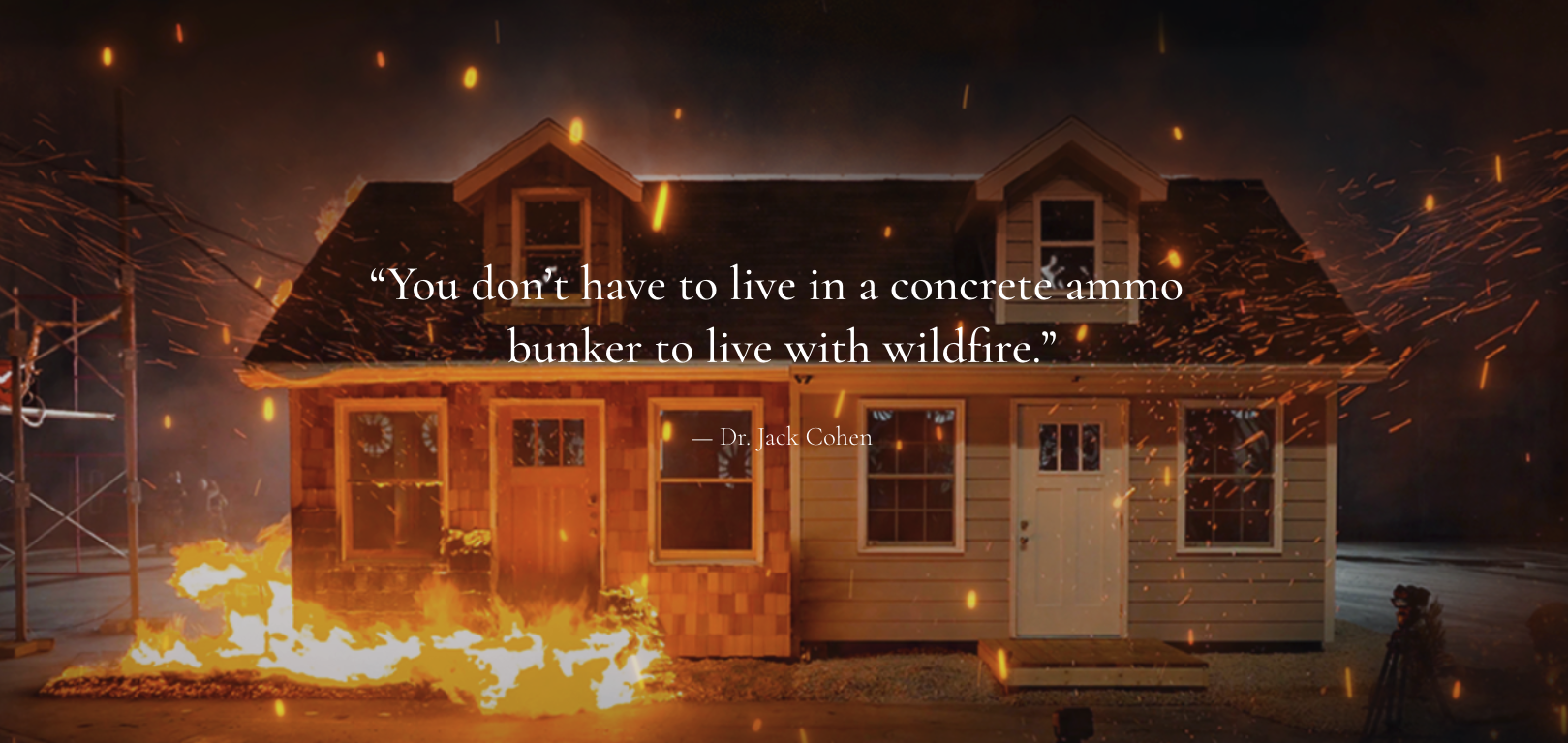
In a large scale home-ignition prevention experiment, this home was built to depict two types of homes: one that burns instantly when met with fire, and one that didn’t ignite.
By Helen Quinn Pasin
In the wake of destructive wildfires across the nation, “Elemental: Reimagining Wildfire” takes a crucial and compelling look at solutions to reimagine wildfire through the voices of climate experts, Indigenous people, and fire survivors.
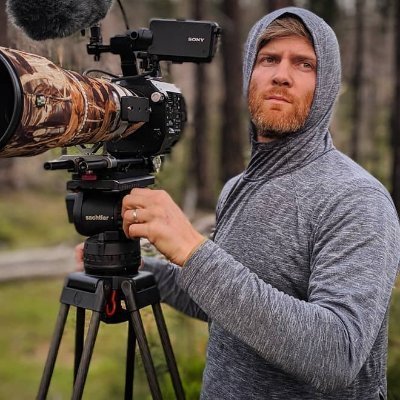
Filmmaker Trip Jennings is also known for his films Rewilding a Mountain (2020) and Postcards from Climate Change (2013) .
The film's director, Trip Jennings, founded Balance Media and has worked with National Geographic for over a decade. His films have won dozens of awards around the world and have aired on major networks on every continent.
“For the last four years, I have dedicated myself to visiting burned landscapes and communities destroyed by fire," Jennings said in his director’s statement .
“I am deeply committed to changing the national conversation around wildfire. I have visited with scientists, investigators, and firefighters, and they have told me again and again that we can have healthy forests and safe communities and that we can prepare for and adapt to fire.”
In an interview with the One Earth Film Festival, Jennings said his interest in wildfire goes back 20 years, to his sophomore year at the University of Oregon when he set out to create a student film on something relevant and landed on wildfire. It became evident that there needed to be more clarity between the public understanding of fire and the physics and science behind the phenomenon. Jennings’ work sets out to bridge that gap.
The film highlights the fire expertise of Yoruk tribal members Rick O’Rouke and Margo Robbins , who are on the Cultural Fire Management Council. For generations further back than O'Rourke's grandma’s great-grandma, the Yurok people used fire to increase food production, improve the creation of raw materials from native plants, and manage the landscape.
Jennings said he’s learned a lot about reimagining wildfire and embracing it as a tool from the Yurok.
“Fire’s always been part of the human relationship with the land, and that’s never going to change,” he said.” To me, that feels very different than the way most colonists, most white people like myself, think about it. The very deep relationship that Rick and Margo, and many Indigenous people have with fire just reflects its real existence in this place.”
“Colonization is the reason that fire was taken away from the average person,” says Robbins in the film. “Colonizers were afraid of fire. They just suppressed them. So it went from something that was used in a good way to something that was really done away with, to exclude it completely.”
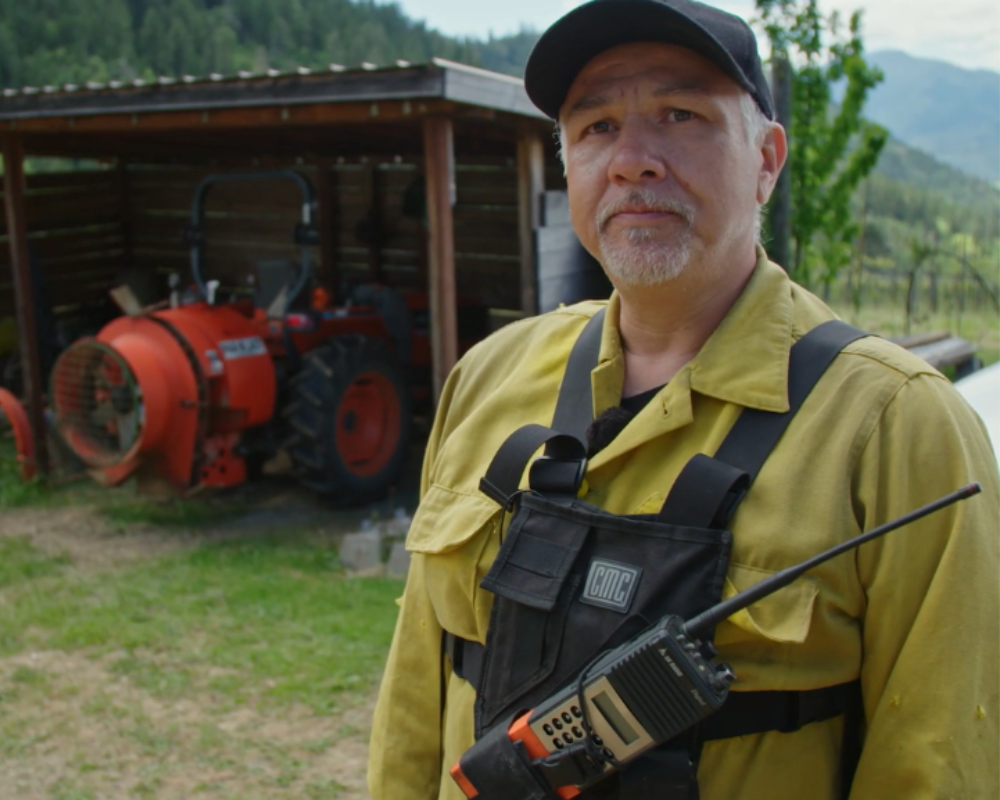
“I do not fight fire. I light fire.” - Rick O’Rourke , Cultural Fire Management Council (CFMC)
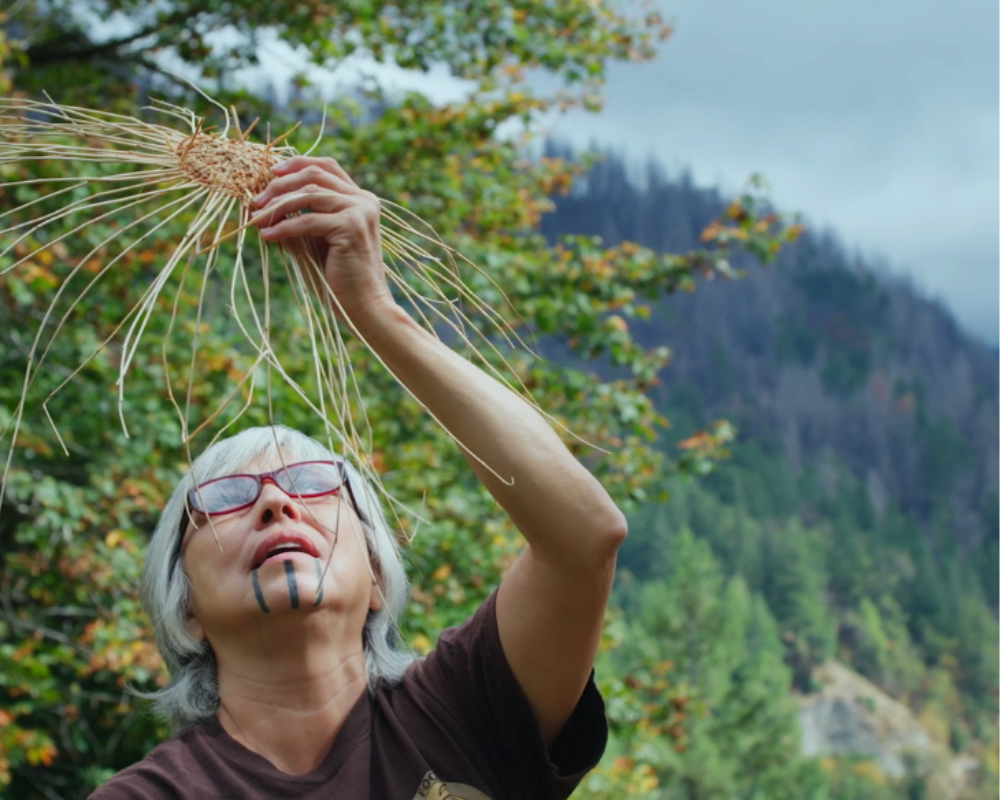
“The number one issue facing our community is to bring fire back to the land.” - Margo Robbins , CFMC
“They started prosecuting us and jailing us for lighting fire, and then they called us arsonists and renegades,” O’Rouke says in the film. There was a mass public hanging of 17 native people for lighting fires,”
Retired USFS Fire Lab research scientist Dr. Jack Cohen has studied fire and how home structures ignite for over 30 years. “If we continue our emergency response approach, wildland-urban fire disasters will be inevitable,” says Cohen in the film. “It’s very frustrating for me to realize that Paradise didn’t have to happen and then listen to an interview of a fire professional saying there is nothing we could have done. Because there is.”
The documentary followed the harrowing escape from Paradise, Calif. as the town ignited from wind-driven embers from a campfire and destroyed the town within a few hours of the fire's start. The 2018 fire killed 86 people and was the most expensive natural disaster on Earth that year. At the time, 2018 was the fourth warmest year in recorded history.
The film explores solutions to preventing home ignition in large-scale burning experiments that yield fascinating and hopeful results.
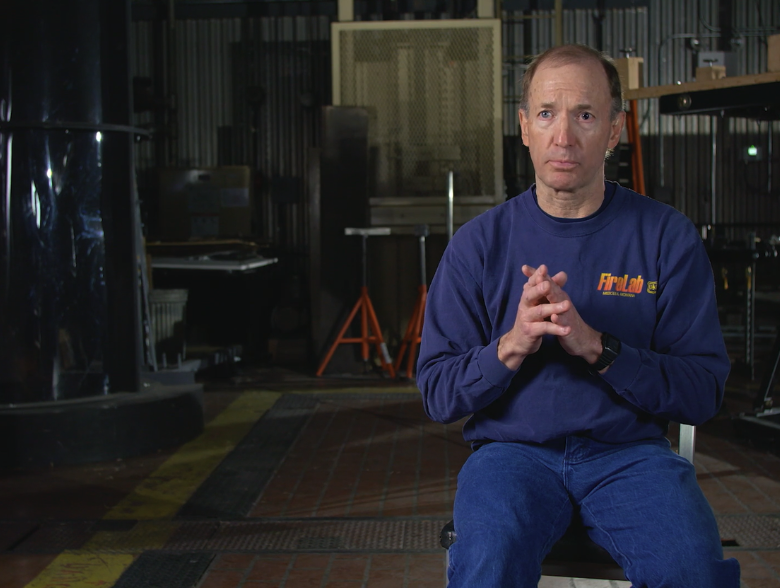
Dr. Jack Cohen’s research addresses the questions: Why are we putting our time and energy into wildfire fighting efforts with such limited margins of success, and How much vegetation control do we actually need to do in order to eliminate exposure to ignition from a wildfire?
“We have huge opportunities to change the requirements for combustion such that it doesn’t happen,” Cohen says in the film. “We don’t have to control the extreme wildfire in order to keep the house from igniting and burning. And we don’t have to live in a concrete ammo bunker to prevent the next Paradise.”
The documentary continues to the even more recent fires of the last two years when Oregon, California, and Colorado suffered their worst wildfires in recorded history and meets seven more experts with promising solutions: fire risk expert.
Dr. Chris Dunn , fire ecologists Dr. Tania Schoenagel , Roy Wright from the Insurance Institute for Business & Home Safety, firefighter Tim Ingalsbee , expert in global change and biology Dr. Beverly Law , and biologist and poet Maya Khosla .
Jennings concluded his interview with One Earth Film Festival by saying that he’s really optimistic that society can positively change its relationship with fire and predicts that in the next five years, the conversation around wildfire solutions will be happening in a fundamentally different way.
To learn how to take action on your home, click here .
“ Elemental: Reimagine Wildfire ” screens in the Earth Day Mini Fest on Wednesday, April 19 at 6:30 p.m. CDT at Thatcher Woods Forest Preserve (River Forest), Gorton Center (Lake Forest), and virtually.
Post-film discussion with Facilitator: Cindy Klein-Banai, Experienced Sustainability Professional and Educator
Panelists: Ralph Bloemers , Executive Producer, Elemental: Reimagine Wildfire; Trip Jennings , Director, Elemental: Reimagine Wildfire; Vic Bogosian, Manager Department of Natural Resources, Pokégnek Bodéwadmik, Pokagon Band of Potawatomi, and Richard F. O'Rourke III, Film Subject, Elemental: Reimagine Wildfire , indigenous fire practitioner and Fire Coordinator, Cultural Fire Management Council.
Helen Quinn-Pasin
Search this site
Around the o menu.

Around the O
An elemental approach to wildfire with trip jennings.

Trip Jennings first started learning about the complexities of wildfire when he was an undergraduate at the University of Oregon twenty years ago.
The Virginia native had been making films and videos since high school, mostly about whitewater kayaking, his passion. Two friends in the School of Journalism and Communication, Kyle Dickman and Becky Kennedy, asked for his help with a project.
The project involved the 2002 Biscuit Fire, a conflagration in southern Oregon and northern California that burned nearly five hundred thousand acres. The fire, and efforts to conduct salvage logging in its aftermath, were in the news.
RELATED LINKS
Student wildfire podcast: The Fire Story
Center for Science Communication Research
School of Journalism and Communication
UO wildfire experts share research at roundtable with Merkley
“They said, ‘For this project we want to make a film instead of writing an article, would you like to collaborate?’” says Jennings, BA ’06 (Spanish). “I was like, ‘Totally.’”
The project, for which Jennings received an independent study credit, was his first brush with forest and wildfire politics in the West, but not the last.
Two decades later, Jennings has a new film about wildfire called Elemental , which premiered in Portland in July and is now on the festival circuit, including at the Mill Valley Film Festival, a long-running event in the Bay Area that highlights independent and international film. The film had a weeklong run in September at the Art House theater in Eugene.
Jennings and his collaborators spent nearly five years on the film, visiting burned landscapes and communities devasted by wildfire.
“I have visited with scientists, investigators, and firefighters,” he says, “and they have told me again and again that we can have healthy forests and safe communities, and that we can prepare for and adapt to fire.”
Jennings, a forty-year-old Portland resident, says he hopes the film helps change the national conversation around wildfire.
He directed and cowrote the film and served as director of photography. Among his collaborators was Sara Quinn, BA ’11 (Clark Honors College, anthropology), who served as producer and editor. Jennings and Quinn have known each other since their undergraduate days, when both were residents of the Lorax, the student housing cooperative on Alder Street. They have been working together since 2014.
After college, Jennings continued making films in collaboration with National Geographic , telling stories of ecosystems around the globe combined with his love of whitewater kayaking.
He came back to fire in 2017 when the Eagle Creek Fire tore through the Columbia River Gorge east of Portland, burning fifty thousand acres over three months.
“That was a real turning point in Oregon, especially for people in Portland,” Jennings says. As ash rained down on the city, talk of climate change was no longer an abstract concept, he says.
“That fire was clearly within the spectrum of what was very normal for the gorge, but we hadn’t experienced fire like that in almost one hundred years,” he says. “It was a bit of a wake-up call.”
As Jennings began working on his new film, he thought the story would be that so many of these landscapes are due for fire, and more prescribed burns should be done to lessen their ferocity.
What changed his thinking about wildfire was a conversation he had with a scientist about the appropriate role for prescribed fire. The scientist told him that prescribed burns have their role, but that anything done to treat the forest or fuels that is farther than one hundred feet from a home has little to no effect on whether the house will burn in a wildfire.
Jennings’s epiphany was that the issue is not the forests or grasslands or chapparal that burn, but rather “the problem is homes are burning and people are dying in these fires, firefighters and residents,” he says. “So the solution has to come from the home out, and that’s what the science says.”
Firefighters are extremely effective at controlling wildfires, but the 2 percent of fires that can’t be controlled cause rampant damage and loss of life. The Camp Fire in 2018 was the deadliest and most destructive fire in California history, killing eighty-six people and destroying eighteen thousand structures. In 2020, Labor Day fires, including the Holiday Farm Fire along the McKenzie River corridor, killed eleven people and destroyed thousands of homes in Oregon, effectively destroying the communities of Blue River, Phoenix, Gates, and Detroit.
“What we need to do is think about the values that are most important to us,” he says, “and that’s homes, communities, and people.”
Some relatively simple fixes to homes in fire zones can help structures survive wildfires—such as sealing attic vents with mesh screens to keep embers out and installing hardscapes next to houses, instead of gardens. More expensive fixes include replacing single-pane windows with tempered triple-pane glass that can withstand the furious winds and windblown debris that can occur in a wildfire.
It’s not a wall of fire that moves through a community and burns homes, it’s embers that blow into a house and catch it on fire.
Says Jennings: “You need to protect your house from that one ember.”
Elemental is “not a doom and gloom documentary,” according to Jennings, despite harrowing scenes of people fleeing flames in Paradise, California, in 2018.
“This is a story that has a solution to a problem. We have the technology and the capacity to protect our homes and communities from wildfire,” he says. “We just have to have the will to do it.”
— By Tim Christie, University Communications
— Photo by Sara Quinn, Balance Media
Submit Your Story Idea
Subscribe to Around the O
- Welcome Username
- MySIFF Picks
Elemental: Reimagine Wildfire
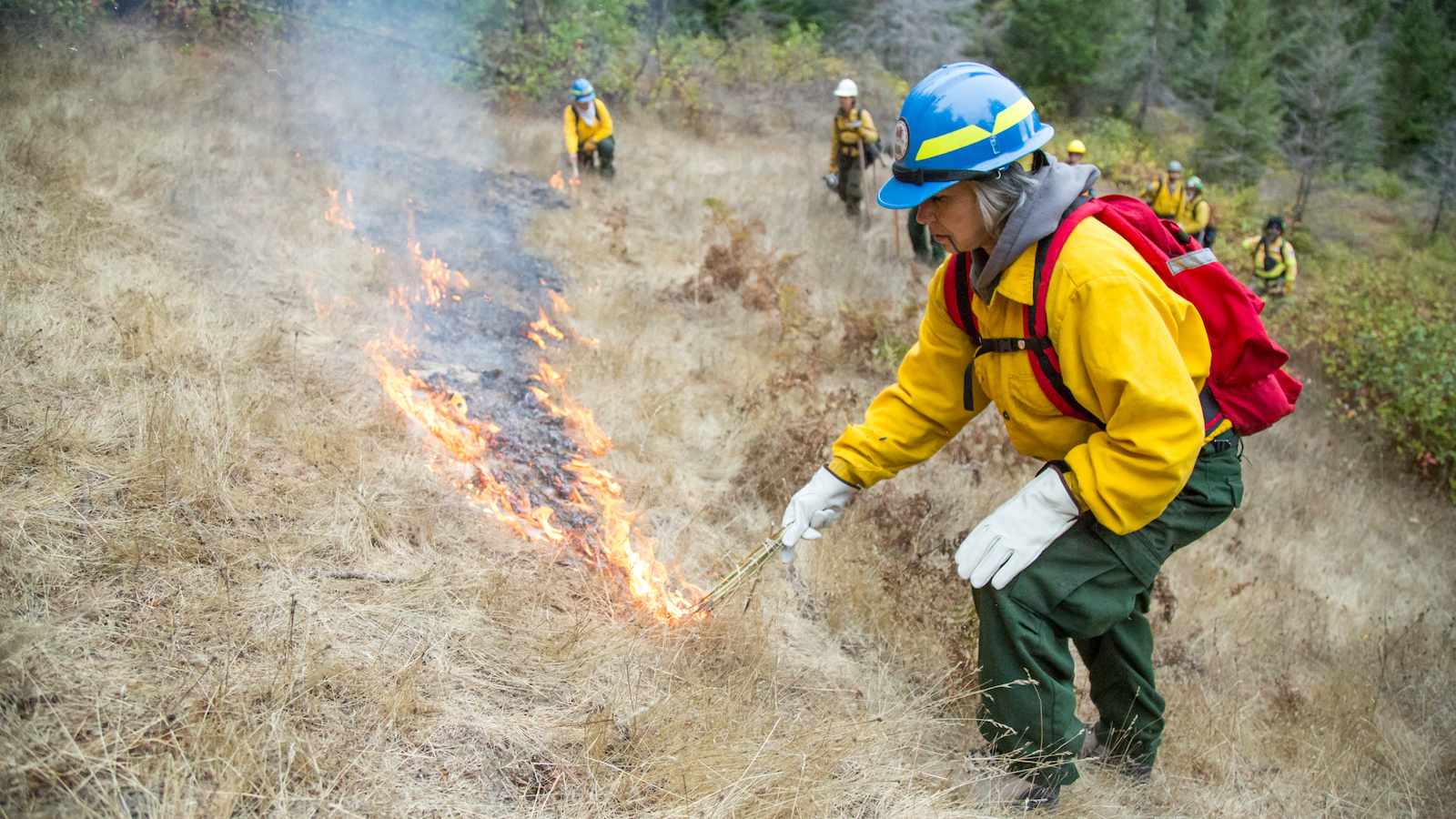
USA | 2021 | 84 min. | Trip Jennings
June 27, 2023
In the wake of destructive fires across the nation, Elemental is an important look at discovering how we can all reimagine our relationship with wildfire, and keep our homes and communities safe.
Executive Producer Ralph Bloemers will lead a panel after the screening with Director Trip Jennings, as well as Kate Anderson, Jennifer Coe, and Mike Lasecki.
Filmed across the West and narrated by Golden Globe and Emmy nominated actor David Oyelowo, Elemental: Reimagine Wildfire (84 min) takes viewers on a journey with the top experts in the nation to better understand fire. The film follows the harrowing escape from Paradise, California as the town ignited from wind-driven embers and burned within a few hours of the fire's start. It then continues to the even more recent fires of the last two years, when Oregon, California and Colorado suffered their worst wildfires in recorded history.
- Director: Trip Jennings
- Principal Cast: Dr. Jack Cohen, Margo Robbins, Dr. Tania Schoenagel, David Oyelowo
- Country: USA
- Running Time: 84 min.
- Editors: Trip Jennings, Sara Quinn
- Music: Nick Jaina
- Website: https://www.elementalfilm.com/
- Language: English
- US Distributor: Adventure Entertainment
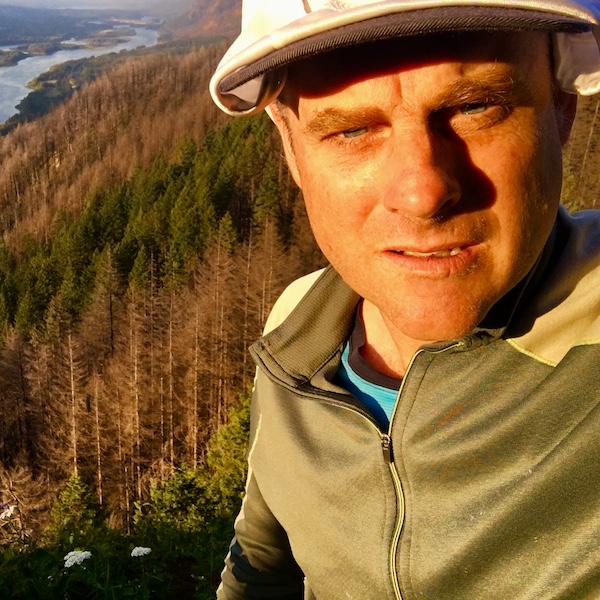
PANELIST BIOS
Ralph Bloemers - Executive Producer, Elemental: Reimagine Wildfire
For nearly two decades, Ralph has advised community-based conservation groups, recreation clubs and citizens throughout the Pacific Northwest on the conservation of our forests, including burned landscapes. Over the past two years he has investigated the causes of fires, documented wildlife in burned landscapes, volunteered his time to rebuild trails in fire burned areas and spent time in these forests with firefighters, expert scientists and ecologists. Ralph has helped the public, decision makers and students confront the dominant cultural beliefs about fire, and understand the paradoxes that mark our relationship with it.
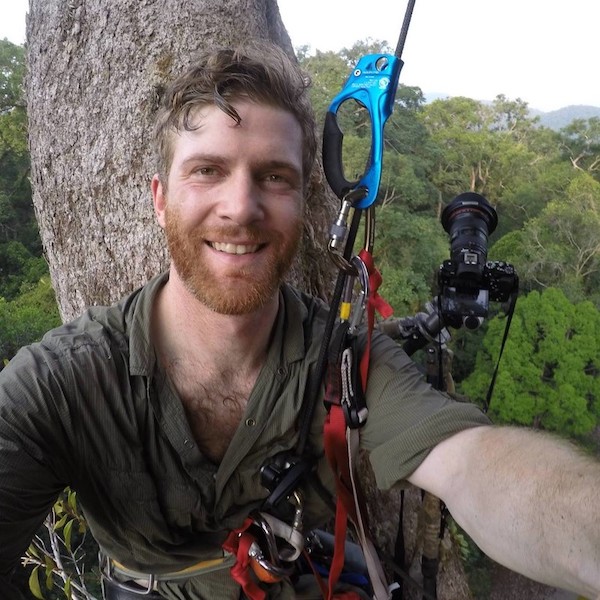
Trip Jennings - Director, Elemental: Reimagine Wildfire
Trip founded Balance Media and has worked with National Geographic for over a decade. He was named Adventurer of the Year by Nat Geo after his first project with the organization, an expedition in Papua New Guinea. Since then his films have won dozens of awards around the world and aired on major networks on every continent. Trip focuses on issues that are at a tipping point. He works to educate the public through film including front line communities and decision makers so they can make informed decisions about issues that affect their lives.

Kate Anderson - Senior Researcher, Farm and Forests Program, Sightline Institute
Kate is the Senior Researcher in Sightline Institute’s Farms and Forests program, leading the organization’s work on rural lands and economies. She is an expert on institutional tools that jointly promote vibrant rural communities and environmental sustainability.

Jenny Coe – Community Wildfire Resilience Coordinator, DNR
Jenny started her position as wildfire resilience coordinator for Western Washington in August this past year, but prior to that served Skagit and Whatcom Conservation Districts for 20 years working with private landowners and local partners in the area on watershed education and wildfire resilience. In her current position, Jenny works to inspire, educate and empower individuals and communities to coexist with wildfire through listening and advocating for community solutions. She is a Western Washington University Huxley College alum.

Mike Lasecki – Senior Resource Specialist, Forest Stewardship, King Conservation District
Mike works on strategies and actions to address the risks posed by wildfire in King County. He workws with local, county, and regional partners to empower and support King County communities to reduce their wildfire risk and become more wildfire resilient.
You are using an outdated browser. Please upgrade your browser or activate Google Chrome Frame to improve your experience.

Receive Wild & Scenic News
Rewilding a mountain.
Trip Jennings, Sara Quinn, William Ripple, Balance Media | 2019 | 27 min.
2020 Official Selection
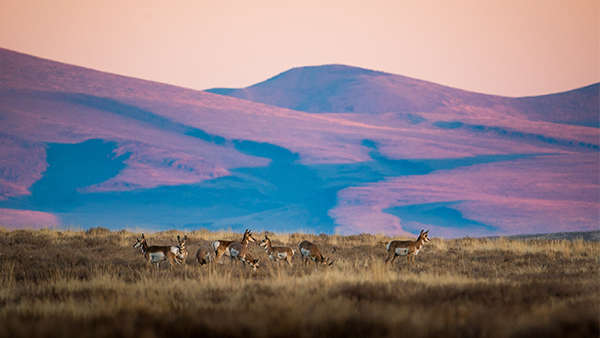
More Information:
rewildingamountain.com | balancemedia.tv


- Abigail Lowell
- Mar 28, 2023
Critically Acclaimed Documentary ELEMENTAL: REIMAGINE WILDFIRE Premiere in Arcata on April 8th

Directed by Portland filmmaker Trip Jennings and produced by Ralph Bloemers, the critically acclaimed documentary ELEMENTAL: REIMAGINE WILDFIRE will premiere in Arcata on Saturday, April 8, 2023 at the Arcata Theatre Lounge with live Q&A after the film with Margo Robbins, Rick O’Rourke and Elizabeth Azzuz - plus Director Trip Jennings. Doors at 4:30 / film at 5:00 / live Q&A after the film.
Buy your tickets soon because the show is expected to sell out! All proceeds will go to the Cultural Fire Management Council. Also find EPIC’s table and come say hello before the film begins!
Filmed in Oregon and narrated by David Oyelowo, ELEMENTAL: REIMAGINE WILDFIRE (84 min) takes viewers on a journey with the top experts in the nation to better understand fire. The film starts with the harrowing escape from Paradise, California as the town ignited from wind-driven embers and burned within a few hours of the fire's start and then continues to recent record shattering fires. ELEMENTAL includes the voices of climate experts, Indigenous people and fire survivors, and asks us to reimagine our relationship with wildfire as we prepare for an increasingly hotter future.
“ California is severely affected by these fires. I did not realize how much can be done by hardening one’s home. I did not realize that embers are more dangerous than the fires,” said David Oyelowo. “It was a huge honor and a pleasure to do this documentary, it is not only informational, I think it is life saving. I hope it will inspire you to take some of the steps advised, and some of the steps that I am taking myself.”
In the wake of destructive fires across the nation, ELEMENTAL is an important look at discovering how we can all reimagine our relationship with wildfire, and keep our homes and communities safe. The solutions are now more timely and urgent than ever.
Former United States Forest Service Chief Michael Dombeck says of the documentary, " Elemental is an outstanding film that deserves the widest possible viewing. In a visually stunning manner, it distills what we’ve learned about wildland fire over the decades and provides a road-map for badly needed changes that will benefit thousands of people, particularly in fire prone communities.”
Trip Jennings founded Balance Media and has worked with National Geographic for over a decade. His films have won dozens of awards around the world and have aired on major networks on every continent. He is the producer of the PBS Digital Series Weathered. For nearly two decades, Ralph Bloemers has worked on wildfire and community safety, restored burned landscapes, and assisted the scientific community with bringing their knowledge and research to the public.
Learn more at https://www.elementalfilm.com/ .
Contact - Ralph Bloemers, Executive Producer, 503-504-2432, [email protected]
- EPIC Events
- Restoring Natural Cycles of Fire
- Fighting Climate Change
Recent Posts
EPIC Tours Atlantic Offshore Wind Farm
A Tribute to the Late Petey Brucker
Register for Great Redwood Trail Webinar, May 13
- Bahasa Indonesia
- Slovenščina
- Science & Tech
- Russian Kitchen
Le Corbusier’s triumphant return to Moscow
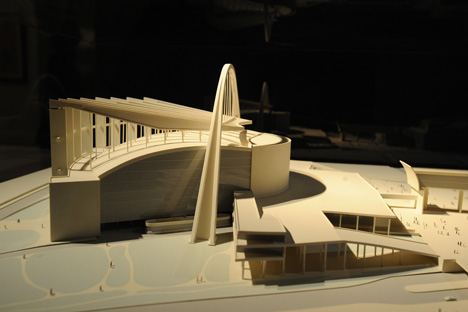
The exhibition of French prominent architect Le Corbusier, held in The Pushkin Museum, brings together the different facets of his talent. Source: ITAR-TASS / Stanislav Krasilnikov
The largest Le Corbusier exhibition in a quarter of a century celebrates the modernist architect’s life and his connection with the city.
Given his affinity with Moscow, it is perhaps surprising that the city had never hosted a major examination of Le Corbusier’s work until now. However, the Pushkin Museum and the Le Corbusier Fund have redressed that discrepancy with the comprehensive exhibition “Secrets of Creation: Between Art and Architecture,” which runs until November 18.
Presenting over 400 exhibits, the exhibition charts Le Corbusier’s development from the young man eagerly sketching buildings on a trip around Europe, to his later years as a prolific and influential architect.
The exhibition brings together the different facets of his talent, showing his publications, artwork and furniture design alongside photographs, models and blueprints of his buildings.
Russian art reveals a new brave world beyond the Black Square
Art-Moscow fair targets younger art collectors
In pictures: 20th century in photographs: 1918-1940
Irina Antonova, director of the Pushkin Museum, said, “It was important for us to also exhibit his art. People know Le Corbusier the architect, but what is less well know is that he was also an artist. Seeing his art and architecture together gives us an insight into his mind and his thought-processes.”
What becomes obvious to visitors of the exhibition is that Le Corbusier was a man driven by a single-minded vision of how form and lines should interact, a vision he was able to express across multiple genres.
The upper wings of the Pushkin Museum are separated by the central stairs and two long balconies. The organizers have exploited this space, allowing comparison of Le Corbusier’s different art forms. On one side there are large paintings in the Purist style he adapted from Cubism, while on the other wall there are panoramic photographs of his famous buildings.
Le Corbusier was a theorist, producing many pamphlets and manifestos which outlined his view that rigorous urban planning could make society more productive and raise the average standard of living.
It was his affinity with constructivism, and its accompanying vision of the way architecture could shape society, which drew him to visit the Soviet Union, where, as he saw it, there existed a “nation that is being organized in accordance with its new spirit.”
The exhibition’s curator Jean-Louis Cohen explains that Le Corbusier saw Moscow as “somewhere he could experiment.” Indeed, when the architect was commissioned to construct the famous Tsentrosoyuz Building, he responded by producing a plan for the entire city, based on his concept of geometric symmetry.
Falling foul of the political climate
He had misread the Soviet appetite for experimentation, and as Cohen relates in his book Le Corbusier, 1887-1965, drew stinging attacks from the likes of El Lissitsky, who called his design “a city on paper, extraneous to living nature, located in a desert through which not even a river must be allowed to pass (since a curve would contradict the style).”
Not to be deterred, Le Corbusier returned to Moscow in 1932 and entered the famous Palace of the Soviets competition, a skyscraper that was planned to be the tallest building in the world.
This time he fell foul of the changing political climate, as Stalin’s growing suspicion of the avant-garde led to the endorsement of neo-classical designs for the construction, which was ultimately never built due to the Second World War.
Situated opposite the proposed site for the Palace of the Soviets, the exhibition offers a tantalizing vision of what might have been, presenting scale models alongside Le Corbusier’s plans, and generating the feeling of an un-built masterpiece.
Despite Le Corbusier’s fluctuating fortunes in Soviet society, there was one architect who never wavered in his support . Constructivist luminary Alexander Vesnin declared that the Tsentrosoyuz building was the "the best building to arise in Moscow for over a century.”
The exhibition sheds light on their professional and personal relationship, showing sketches and letters they exchanged. In a radical break from the abstract nature of most of Le Corbusier’s art, this corner of the exhibition highlights the sometimes volatile architect’s softer side, as shown through nude sketches and classical still-life paintings he sent to Vesnin.
“He was a complex person” says Cohen. “It’s important to show his difficult elements; his connections with the USSR, with Mussolini. Now that relations between Russia and the West have improved, we can examine this. At the moment there is a new season in Le Corbusier interpretation.” To this end, the exhibition includes articles that have never previously been published in Russia, as well as Le Corbusier’s own literature.
Completing Le Corbusier’s triumphant return to Russia is a preview of a forthcoming statue, to be erected outside the Tsentrosoyuz building. Even if she couldn’t quite accept his vision of a planned city, Moscow is certainly welcoming him back.
All rights reserved by Rossiyskaya Gazeta.
to our newsletter!
Get the week's best stories straight to your inbox
This website uses cookies. Click here to find out more.
2018 Primetime Emmy & James Beard Award Winner
In Transit: Notes from the Underground
Jun 06 2018.
Spend some time in one of Moscow’s finest museums.
Subterranean commuting might not be anyone’s idea of a good time, but even in a city packing the war-games treasures and priceless bejeweled eggs of the Kremlin Armoury and the colossal Soviet pavilions of the VDNKh , the Metro holds up as one of Moscow’s finest museums. Just avoid rush hour.
The Metro is stunning and provides an unrivaled insight into the city’s psyche, past and present, but it also happens to be the best way to get around. Moscow has Uber, and the Russian version called Yandex Taxi , but also some nasty traffic. Metro trains come around every 90 seconds or so, at a more than 99 percent on-time rate. It’s also reasonably priced, with a single ride at 55 cents (and cheaper in bulk). From history to tickets to rules — official and not — here’s what you need to know to get started.
A Brief Introduction Buying Tickets Know Before You Go (Down) Rules An Easy Tour
A Brief Introduction
Moscow’s Metro was a long time coming. Plans for rapid transit to relieve the city’s beleaguered tram system date back to the Imperial era, but a couple of wars and a revolution held up its development. Stalin revived it as part of his grand plan to modernize the Soviet Union in the 1920s and 30s. The first lines and tunnels were constructed with help from engineers from the London Underground, although Stalin’s secret police decided that they had learned too much about Moscow’s layout and had them arrested on espionage charges and deported.
The beauty of its stations (if not its trains) is well-documented, and certainly no accident. In its illustrious first phases and particularly after the Second World War, the greatest architects of Soviet era were recruited to create gleaming temples celebrating the Revolution, the USSR, and the war triumph. No two stations are exactly alike, and each of the classic showpieces has a theme. There are world-famous shrines to Futurist architecture, a celebration of electricity, tributes to individuals and regions of the former Soviet Union. Each marble slab, mosaic tile, or light fixture was placed with intent, all in service to a station’s aesthetic; each element, f rom the smallest brass ear of corn to a large blood-spattered sword on a World War II mural, is an essential part of the whole.

The Metro is a monument to the Soviet propaganda project it was intended to be when it opened in 1935 with the slogan “Building a Palace for the People”. It brought the grand interiors of Imperial Russia to ordinary Muscovites, celebrated the Soviet Union’s past achievements while promising its citizens a bright Soviet future, and of course, it was a show-piece for the world to witness the might and sophistication of life in the Soviet Union.
It may be a museum, but it’s no relic. U p to nine million people use it daily, more than the London Underground and New York Subway combined. (Along with, at one time, about 20 stray dogs that learned to commute on the Metro.)
In its 80+ year history, the Metro has expanded in phases and fits and starts, in step with the fortunes of Moscow and Russia. Now, partly in preparation for the World Cup 2018, it’s also modernizing. New trains allow passengers to walk the entire length of the train without having to change carriages. The system is becoming more visitor-friendly. (There are helpful stickers on the floor marking out the best selfie spots .) But there’s a price to modernity: it’s phasing out one of its beloved institutions, the escalator attendants. Often they are middle-aged or elderly women—“ escalator grandmas ” in news accounts—who have held the post for decades, sitting in their tiny kiosks, scolding commuters for bad escalator etiquette or even bad posture, or telling jokes . They are slated to be replaced, when at all, by members of the escalator maintenance staff.
For all its achievements, the Metro lags behind Moscow’s above-ground growth, as Russia’s capital sprawls ever outwards, generating some of the world’s worst traffic jams . But since 2011, the Metro has been in the middle of an ambitious and long-overdue enlargement; 60 new stations are opening by 2020. If all goes to plan, the 2011-2020 period will have brought 125 miles of new tracks and over 100 new stations — a 40 percent increase — the fastest and largest expansion phase in any period in the Metro’s history.
Facts: 14 lines Opening hours: 5 a.m-1 a.m. Rush hour(s): 8-10 a.m, 4-8 p.m. Single ride: 55₽ (about 85 cents) Wi-Fi network-wide

Buying Tickets
- Ticket machines have a button to switch to English.
- You can buy specific numbers of rides: 1, 2, 5, 11, 20, or 60. Hold up fingers to show how many rides you want to buy.
- There is also a 90-minute ticket , which gets you 1 trip on the metro plus an unlimited number of transfers on other transport (bus, tram, etc) within 90 minutes.
- Or, you can buy day tickets with unlimited rides: one day (218₽/ US$4), three days (415₽/US$7) or seven days (830₽/US$15). Check the rates here to stay up-to-date.
- If you’re going to be using the Metro regularly over a few days, it’s worth getting a Troika card , a contactless, refillable card you can use on all public transport. Using the Metro is cheaper with one of these: a single ride is 36₽, not 55₽. Buy them and refill them in the Metro stations, and they’re valid for 5 years, so you can keep it for next time. Or, if you have a lot of cash left on it when you leave, you can get it refunded at the Metro Service Centers at Ulitsa 1905 Goda, 25 or at Staraya Basmannaya 20, Building 1.
- You can also buy silicone bracelets and keychains with built-in transport chips that you can use as a Troika card. (A Moscow Metro Fitbit!) So far, you can only get these at the Pushkinskaya metro station Live Helpdesk and souvenir shops in the Mayakovskaya and Trubnaya metro stations. The fare is the same as for the Troika card.
- You can also use Apple Pay and Samsung Pay.
Rules, spoken and unspoken
No smoking, no drinking, no filming, no littering. Photography is allowed, although it used to be banned.
Stand to the right on the escalator. Break this rule and you risk the wrath of the legendary escalator attendants. (No shenanigans on the escalators in general.)
Get out of the way. Find an empty corner to hide in when you get off a train and need to stare at your phone. Watch out getting out of the train in general; when your train doors open, people tend to appear from nowhere or from behind ornate marble columns, walking full-speed.
Always offer your seat to elderly ladies (what are you, a monster?).
An Easy Tour
This is no Metro Marathon ( 199 stations in 20 hours ). It’s an easy tour, taking in most—though not all—of the notable stations, the bulk of it going clockwise along the Circle line, with a couple of short detours. These stations are within minutes of one another, and the whole tour should take about 1-2 hours.
Start at Mayakovskaya Metro station , at the corner of Tverskaya and Garden Ring, Triumfalnaya Square, Moskva, Russia, 125047.
1. Mayakovskaya. Named for Russian Futurist Movement poet Vladimir Mayakovsky and an attempt to bring to life the future he imagined in his poems. (The Futurist Movement, natch, was all about a rejecting the past and celebrating all things speed, industry, modern machines, youth, modernity.) The result: an Art Deco masterpiece that won the National Grand Prix for architecture at the New York World’s Fair in 1939. It’s all smooth, rounded shine and light, and gentle arches supported by columns of dark pink marble and stainless aircraft steel. Each of its 34 ceiling niches has a mosaic. During World War II, the station was used as an air-raid shelter and, at one point, a bunker for Stalin. He gave a subdued but rousing speech here in Nov. 6, 1941 as the Nazis bombed the city above.

Take the 3/Green line one station to:
2. Belorusskaya. Opened in 1952, named after the connected Belarussky Rail Terminal, which runs trains between Moscow and Belarus. This is a light marble affair with a white, cake-like ceiling, lined with Belorussian patterns and 12 Florentine ceiling mosaics depicting life in Belarussia when it was built.

Transfer onto the 1/Brown line. Then, one stop (clockwise) t o:
3. Novoslobodskaya. This station was designed around the stained-glass panels, which were made in Latvia, because Alexey Dushkin, the Soviet starchitect who dreamed it up (and also designed Mayakovskaya station) couldn’t find the glass and craft locally. The stained glass is the same used for Riga’s Cathedral, and the panels feature plants, flowers, members of the Soviet intelligentsia (musician, artist, architect) and geometric shapes.

Go two stops east on the 1/Circle line to:
4. Komsomolskaya. Named after the Komsomol, or the Young Communist League, this might just be peak Stalin Metro style. Underneath the hub for three regional railways, it was intended to be a grand gateway to Moscow and is today its busiest station. It has chandeliers; a yellow ceiling with Baroque embellishments; and in the main hall, a colossal red star overlaid on golden, shimmering tiles. Designer Alexey Shchusev designed it as an homage to the speech Stalin gave at Red Square on Nov. 7, 1941, in which he invoked Russia’s illustrious military leaders as a pep talk to Soviet soldiers through the first catastrophic year of the war. The station’s eight large mosaics are of the leaders referenced in the speech, such as Alexander Nevsky, a 13th-century prince and military commander who bested German and Swedish invading armies.

One more stop clockwise to Kurskaya station, and change onto the 3/Blue line, and go one stop to:
5. Baumanskaya. Opened in 1944. Named for the Bolshevik Revolutionary Nikolai Bauman , whose monument and namesake district are aboveground here. Though he seemed like a nasty piece of work (he apparently once publicly mocked a woman he had impregnated, who later hung herself), he became a Revolutionary martyr when he was killed in 1905 in a skirmish with a monarchist, who hit him on the head with part of a steel pipe. The station is in Art Deco style with atmospherically dim lighting, and a series of bronze sculptures of soldiers and homefront heroes during the War. At one end, there is a large mosaic portrait of Lenin.

Stay on that train direction one more east to:
6. Elektrozavodskaya. As you may have guessed from the name, this station is the Metro’s tribute to all thing electrical, built in 1944 and named after a nearby lightbulb factory. It has marble bas-relief sculptures of important figures in electrical engineering, and others illustrating the Soviet Union’s war-time struggles at home. The ceiling’s recurring rows of circular lamps give the station’s main tunnel a comforting glow, and a pleasing visual effect.

Double back two stops to Kurskaya station , and change back to the 1/Circle line. Sit tight for six stations to:
7. Kiyevskaya. This was the last station on the Circle line to be built, in 1954, completed under Nikita Khrushchev’ s guidance, as a tribute to his homeland, Ukraine. Its three large station halls feature images celebrating Ukraine’s contributions to the Soviet Union and Russo-Ukrainian unity, depicting musicians, textile-working, soldiers, farmers. (One hall has frescoes, one mosaics, and the third murals.) Shortly after it was completed, Khrushchev condemned the architectural excesses and unnecessary luxury of the Stalin era, which ushered in an epoch of more austere Metro stations. According to the legend at least, he timed the policy in part to ensure no Metro station built after could outshine Kiyevskaya.

Change to the 3/Blue line and go one stop west.
8. Park Pobedy. This is the deepest station on the Metro, with one of the world’s longest escalators, at 413 feet. If you stand still, the escalator ride to the surface takes about three minutes .) Opened in 2003 at Victory Park, the station celebrates two of Russia’s great military victories. Each end has a mural by Georgian artist Zurab Tsereteli, who also designed the “ Good Defeats Evil ” statue at the UN headquarters in New York. One mural depicts the Russian generals’ victory over the French in 1812 and the other, the German surrender of 1945. The latter is particularly striking; equal parts dramatic, triumphant, and gruesome. To the side, Red Army soldiers trample Nazi flags, and if you look closely there’s some blood spatter among the detail. Still, the biggest impressions here are the marble shine of the chessboard floor pattern and the pleasingly geometric effect if you view from one end to the other.

Keep going one more stop west to:
9. Slavyansky Bulvar. One of the Metro’s youngest stations, it opened in 2008. With far higher ceilings than many other stations—which tend to have covered central tunnels on the platforms—it has an “open-air” feel (or as close to it as you can get, one hundred feet under). It’s an homage to French architect Hector Guimard, he of the Art Nouveau entrances for the Paris M é tro, and that’s precisely what this looks like: A Moscow homage to the Paris M é tro, with an additional forest theme. A Cyrillic twist on Guimard’s Metro-style lettering over the benches, furnished with t rees and branch motifs, including creeping vines as towering lamp-posts.

Stay on the 3/Blue line and double back four stations to:
10. Arbatskaya. Its first iteration, Arbatskaya-Smolenskaya station, was damaged by German bombs in 1941. It was rebuilt in 1953, and designed to double as a bomb shelter in the event of nuclear war, although unusually for stations built in the post-war phase, this one doesn’t have a war theme. It may also be one of the system’s most elegant: Baroque, but toned down a little, with red marble floors and white ceilings with gilded bronze c handeliers.

Jump back on the 3/Blue line in the same direction and take it one more stop:
11. Ploshchad Revolyutsii (Revolution Square). Opened in 1938, and serving Red Square and the Kremlin . Its renowned central hall has marble columns flanked by 76 bronze statues of Soviet heroes: soldiers, students, farmers, athletes, writers, parents. Some of these statues’ appendages have a yellow sheen from decades of Moscow’s commuters rubbing them for good luck. Among the most popular for a superstitious walk-by rub: the snout of a frontier guard’s dog, a soldier’s gun (where the touch of millions of human hands have tapered the gun barrel into a fine, pointy blade), a baby’s foot, and a woman’s knee. (A brass rooster also sports the telltale gold sheen, though I am told that rubbing the rooster is thought to bring bad luck. )
Now take the escalator up, and get some fresh air.


R&K Insider
Join our newsletter to get exclusives on where our correspondents travel, what they eat, where they stay. Free to sign up.
21 Things to Know Before You Go to Moscow
Featured city guides.
You are using an outdated browser. Please upgrade your browser .
Moscow Travel Guide
- Guide to Russia
- Russian Destination Guide
Why travel to Moscow
Contrasts: 12th century monasteries and some of the tallest skyscrapers in Europe can be found side-by-side in this complex and captivating city. The diversity of this mega-city is astounding. Only a few steps away from the solemn red facade of the Kremlin and the sounds of righteous church bells, a buzzing night scene and alternative-fashion boutiques can be found.
Culture: In Moscow only the best goes. Be it a theatre, restaurant or gallery, the standards are certain to be world-class. The Bolshoi ballet company is reputed to be even better than the Mariinsky’s and “MMOMA” (Moscow’s museum of modern art) exhibits works of art as profound as any that could be found in the famed MOMA.
Convenience: Unlike the rest of Russia, it’s easy enough to get by with just English in Moscow and, driving excepted, it is surprisingly safe: the murder rate is lower than in some of America’s major cities.
Top Sights in Moscow

St. Basil’s
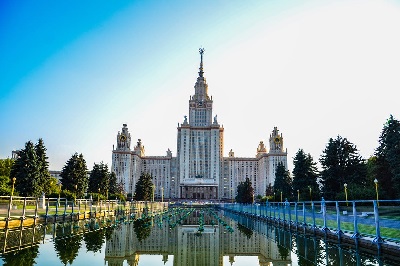
Novodevichy Convent
MORE SIGHTS
- Moscow Fact File
- History of Moscow Russia
- Arriving in Moscow
- Getting Around
- Moscow Museums
- Nightlife in Moscow
- Moscow Restaurants
- Moscow Entertainment
- Activities in Moscow
- Outside Moscow
FEATURED MOSCOW TOURS
See tours which enjoy highest popularity with our customers
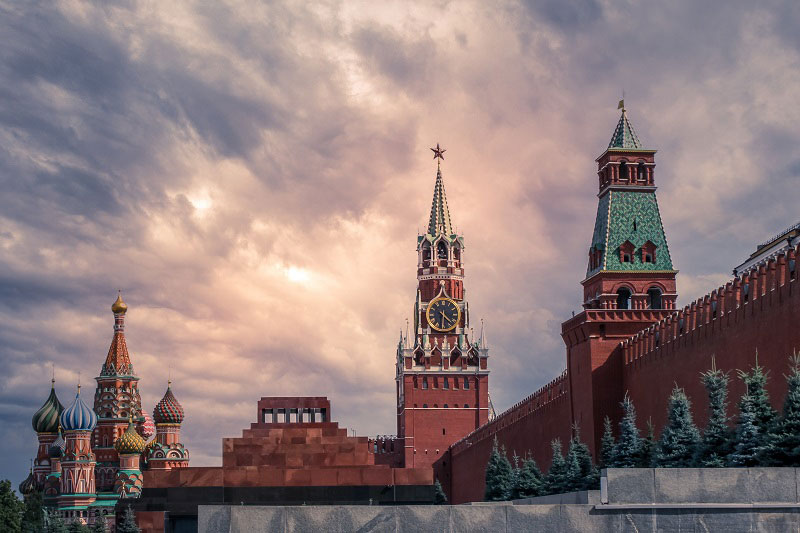
CLASSIC MOSCOW
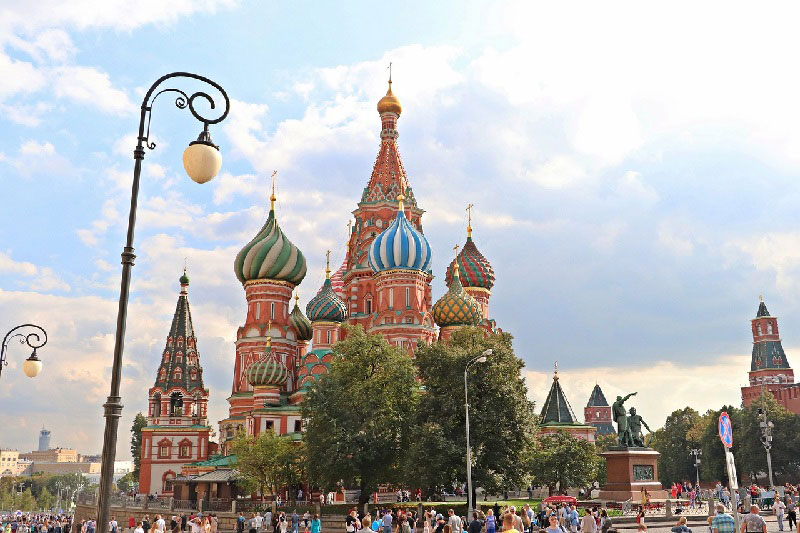
A WEEK IN MOSCOW
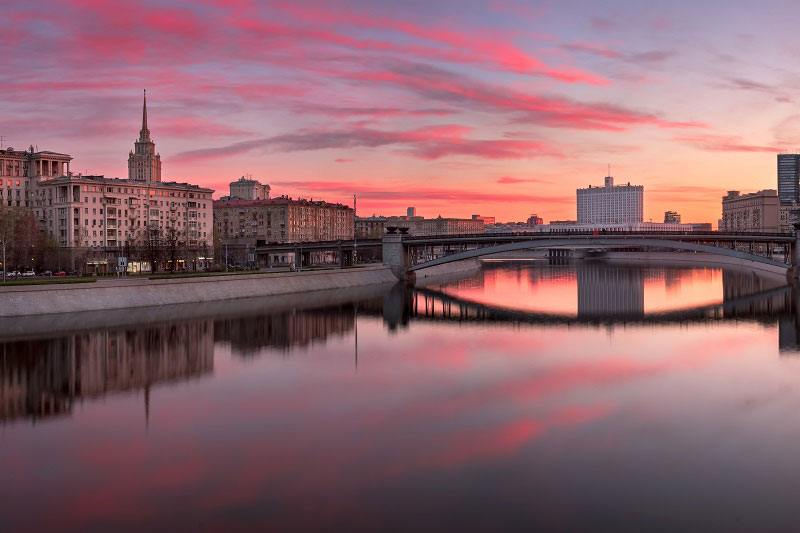
WEEKEND IN MOSCOW
View all tours
Why visit Moscow
It would take more than two days to walk around the perimeter of the biggest city in Europe, Moscow. Many of its inhabitants barely know what’s beyond the few blocks around their flat and there are so many attractions that it’s almost impossible to know where to start. If there is such a thing as an antidote to boredom, Moscow City is it. The mind-boggling range and diversity of things to do, places to eat, parks, historical monuments and more means that a vacation in Moscow has a wealth of activities to offer for every type of traveler, from young families to retirees.
Reasons to Vacation in Moscow in 2022
The Bolshoi theatre is familiar to almost everyone as Russia’s grandest theatre, but what people don’t know is that there are many more bolshoi (big) sites in Moscow that are worth travelling all the way to Moscow to see. For more than 100 years, the world’s biggest bell has been hidden behind the Kremlin’s walls and inside Moscow’s main park (which is bigger than some countries!) there is the world’s largest outdoor ice-rink. Travelers that visit Moscow can stay at the Izmailovo, Europe’s biggest hotel, then eat at the largest and most historic McDonald’s in Europe and after that have fun at the largest European indoor theme park!
Ancient Past & Stunning Architecture:
As those who travel to Moscow will see, just because Moscow is a city of record-breaking, glitzy high-rises doesn’t mean that there is no history. On the famous Arbat street, time-worn, wooden storehouses and century-old churches are squashed up against grey, soviet blocks which are then towered over by 21st century office-blocks. Unlike its much younger sibling, St Petersburg, Moscow’s roots stretch way back to the 12th century. Within the walls of the Kremlin, the city’s oldest building the Cathedral of Assumption can be admired in all its 500+ years of age.
Culture & Convenience
For a foreigner who has never visited Russia, Moscow is the perfect stepping stone into this great land of mystery. From the country’s best classical ballet troupes to snow-white troikas trotting through the parks, all the highlights of Russian culture can be had in Moscow without any of the complications that would be expected in other, less developed regions of Russia.
Cheap as Caviar
In Moscow, everything is bargain when with the current foreign exchange rates being what they are. Even caviar doesn’t seem so dear when the exchange rate is at 60rub to the dollar, so go on indulge yourself! Take your 2022 vacation in Moscow and have the best of both worlds, with European luxury at very affordable prices.

Lena, our guide in Moscow was excellent. She was very knowledgable and could answer any question we had for her. We liked that she could pick up on our interests and take us places we might not have thought of to go. When we realized that one of the places we had chosen to see would probably not be that interesting to us, she was able to arrange entry to the Diamond Fund and the Armoury for us. Riding the Metro with Lena was a real adventure and a lot of fun. In Saint Petersburg we found Anna well versed in the history of the Tsars and in the Hermitage collection. Arkady in Veliky Novgorod was a very good guide and answered all of our questions with ease. Novgorod was perhaps a long way to go for a day trip, but we did enjoy it. Vasily was a great driver to have and kept us safe with good humour and skill. We enjoyed ourselves so much, my daughter says she is already planning to return. We would both have no hesistation to recommend ExpresstoRussia to anyone we know.
Just wanted to let you know that My grandson Bruno and I couldn´t have been more pleased with our week in Moscow (6/15 - 6/21). We were absolutely enchanted with the whole experience, including getting lost a couple of times in the Metro during our free time. Although both our guides (both Eleanas) were excellent, I would particularly commend the first one (she took us to the Tatiakov, the KGB tour, and to that beautiful cemetery where so many great Russian artists, authors, composers, musicians, militarists, and politicians are buried). Her knowledge is encyclopedic; and her understanding of today´s Russia as a product of its past was, for us, truly enlightening. I will be taking another tour in Russia, with my wife, within the next two or three years. I will be in touch with you when the time comes. Meanwhile, I will refer you to other potential visitors to Russia as I meet them.
We had a great time both in Moscow and St Petersburg. Your travel agency was excellent in coordinating the whole trip. Everything worked like clockwork. The guides assigned to us were very nice and friendly. They had a great knowledge of their subjects. The cars and the drivers were great. The hotels were good and the itinerary was good. All in all, it was a wonderful experience. It was nice dealing with you and your company. Thank you very much for a great Russian experience. Have a great future ahead
- 31 reviews of Express to Russia Moscow Tours in Moscow
Our travel brands include

Express to Russia
Join us on Facebook
We invite you to become a fan of our company on Facebook and read Russian news and travel stories. To become a fan, click here .
Join our own Russian Travel, Culture and Literature Club on Facebook. The club was created to be a place for everyone with an interest in Russia to get to know each other and share experiences, stories, pictures and advice. To join our club, please follow this link .
We use cookies to improve your experience on our Website, and to facilitate providing you with services available through our Website. To opt out of non-essential cookies, please click here . By continuing to use our Website, you accept our use of cookies, the terms of our Privacy Policy and Terms of Service . I agree
- Moscow Tourism
- Moscow Hotels
- Moscow Bed and Breakfast
- Moscow Vacation Rentals
- Flights to Moscow
- Moscow Restaurants
- Things to Do in Moscow
Moscow Travel Forum
- Moscow Photos
- All Moscow Hotels
- Moscow Hotel Deals
- Moscow Motels
- Moscow Hostels
- Moscow Campgrounds
- Moscow Business Hotels
- Moscow Spa Resorts
- Moscow Family Hotels
- Moscow Luxury Hotels
- Romantic Hotels in Moscow
- Moscow Green Hotels
- Moscow Ski-In / Ski-Out Hotels
- Moscow Resorts
- 5-stars Hotels in Moscow
- 4-stars Hotels in Moscow
- 3-stars Hotels in Moscow
- Hampton by Hilton Hotels in Moscow
- AZIMUT Hotels in Moscow
- Marriott Hotels in Moscow
- Novotel Hotels in Moscow
- Crowne Plaza Hotels in Moscow
- Rotana Hotels in Moscow
- Accor Hotels in Moscow
- InterContinental (IHG) Hotels in Moscow
- Radisson Hotels in Moscow
- Hilton Hotels in Moscow
- Holiday Inns in Moscow
- ibis Hotels in Moscow
- Moscow Hotels with Pools
- Pet Friendly Hotels in Moscow
- Moscow Hotels with Free Parking
- 3rd Transport Ring (TTK) Hotels
- District Central (TsAO) Hotels
- Garden Ring Hotels
- Boulevard Ring Hotels
- Tverskoy Hotels
- Red Square & Kitay-gorod Hotels
- Zamoskvorechye Hotels
- Meshchanskiy Hotels
- Presnensky Hotels
- District Eastern (VAO) Hotels
- Cheap Accommodations in Moscow
- Boutique Hotels in Moscow
- Moscow Heritage Hotels
- Hotels with Nightclubs in Moscow
- Moscow City Center Hotels
- Moscow Hotels with Allergy-free rooms
- Luxury Family Hotels in Moscow
- Cheap Moscow Bed and Breakfast
- Hotels With Entertainment in Moscow
- Hotels With Babysitting in Moscow
- Hotels near Red Square
- Hotels near Moscow Metro
- Hotels near Saint Basil's Cathedral
- Hotels near Moscow Kremlin
- Hotels near High-Speed Train Sapsan
- Hotels near GUM
- Hotels near State Tretyakov Gallery
- Hotels near Tsaritsyno Museum-Reserve
- Hotels near Armoury Chamber
- Hotels near Bolshoi Theatre
- Hotels near Kremlin Walls and Towers
- Hotels near Gorky Central Park of Culture and Leisure
- Hotels near Kolomenskoye Historical and Architectural Museum and Reserve
- Hotels near PANORAMA360
- Things to Do
- Restaurants
- Vacation Rentals
- Travel Stories
- Rental Cars
- Add a Place
- Travel Forum
- Travelers' Choice
- Help Center
Moscow Forum
- Europe
- Russia
- Central Russia
- United States Forums
- Europe Forums
- Canada Forums
- Asia Forums
- Central America Forums
- Africa Forums
- Caribbean Forums
- Mexico Forums
- South Pacific Forums
- South America Forums
- Middle East Forums
- Honeymoons and Romance
- Business Travel
- Train Travel
- Traveling With Disabilities
- Tripadvisor Support
- Solo Travel
- Bargain Travel
- Timeshares / Vacation Rentals
- Russia forums
- Central Russia forums
- Where can I get initial answers to ANY question?

IMAGES
COMMENTS
trip jennings. Principal & Founder of Balance Media, Trip has filled many passports with stamps from projects around the world. He got his start creating kayaking videos, then began working with National Geographic. In 2007, he was named National Geographic Adventurer of the Year Honoree.
Jun 2011 - Present 12 years 11 months. Portland, Oregon Area. Balance Media is my video production LLC. I work with a team of creative professionals to produce top quality television, documentary ...
Trip Jennings founded Balance Media and has worked with National Geographic for over a decade. His films have won dozens of awards around the world and have aired on major networks on every continent. For nearly two decades, Ralph Bloemers has worked on wildfire and community safety, restored burned trails, and assisted the scientific community ...
The Columbia Gorge News reported that filmmaker Trip Jennings founded Balance Media and has worked with National Geographic for more than a decade. His films have won dozens of awards around the ...
Filmmaker Trip Jennings is also known for his films Rewilding a Mountain (2020) and Postcards from Climate Change (2013). The film's director, Trip Jennings, founded Balance Media and has worked with National Geographic for over a decade.
Principal & Founder of Balance Media, Trip's filled many passports with stamps from projects around the world. He got his start creating kayaking videos, then began working with National Geographic. In 2007, he was named National Geographic Adventurer of the Year Honoree. Trip is a talented videographer and producer.
Balance Media is an award winning, full-spectrum video production company in the heart of the Pacific Northwest. ... Our team is led by Trip Jennings and includes a number of experienced ...
An Elemental Approach to Wildfire with Trip Jennings. October 5, 2022 - 9:05am. Twitter Facebook. Trip Jennings first started learning about the complexities of wildfire when he was an undergraduate at the University of Oregon twenty years ago. The Virginia native had been making films and videos since high school, mostly about whitewater ...
Trip Jennings - Director, Elemental: Reimagine Wildfire. Trip founded Balance Media and has worked with National Geographic for over a decade. He was named Adventurer of the Year by Nat Geo after his first project with the organization, an expedition in Papua New Guinea. Since then his films have won dozens of awards around the world and aired ...
Rewilding a Mountain. Trip Jennings, Sara Quinn, William Ripple, Balance Media | 2019 | 27 min. 2020 Official Selection. The sagebrush sea is a landscape of stark beauty and captivating wildlife, yet rapid desertification and extractive industries threaten this vast basin. But at Hart Mountain National Antelope Refuge in Southeastern Oregon, a ...
Director Trip Jennings is the founder of Balance Media and has worked as a filmmaker for National Geographic and PBS. He found his passion for filmmaking at a young age and began shooting mini-documentaries in college, including a student film about the Biscuit Fire in Southern Oregon in 2002, which burned 500,000 acres. ...
Trip Jennings. DIRECTOR. Trip founded Balance Media and has worked with National Geographic for over a decade. He was named Adventurer of the Year by Nat Geo after his first project with the organization, an expedition in Papua New Guinea. Since then his films have won dozens of awards around the world and aired on major networks on every ...
Director Biography - Trip Jennings. Trip founded Balance Media and has worked with National Geographic for over a decade. He was named Adventurer of the Year by Nat Geo after his first project with the organization, an expedition in Papua New Guinea. Since then his films have won dozens of awards around the world and aired on major networks on ...
Trip Jennings founded Balance Media and has worked with National Geographic for over a decade. His films have won dozens of awards around the world and have aired on major networks on every continent. He is the producer of the PBS Digital Series Weathered. For nearly two decades, Ralph Bloemers has worked on wildfire and community safety ...
Trip Jennings founded Balance Media and has worked with National Geographic for over a decade. His films have won dozens of awards around the world and have aired on major networks on every continent. For nearly two decades, Ralph Bloemers has worked on wildfire and community safety, restored burned trails, and assisted the scientific community ...
Directed by the visionary filmmaker Trip Jennings, this film offers a fresh perspective on our relationship with fire . ... Photo Credit by Balance Media. From the very beginning, the documentary ...
Presenting over 400 exhibits, the exhibitioncharts Le Corbusier's development from the young man eagerly sketching buildings on a trip around Europe, to his later years as a prolific and ...
Or, get an app. Download Yandex Metro. This app has bilingual maps and a route planner that works offline. The Moscow Metro app has a route planner, and you can use it to top up a Troika card and get updates on delays and maintenance work. Disabled passengers can also use it to request an escort or assistance.
" Balance Media far exceeded our expectations for video production. Their work has produced a measurable impact, putting Divers Institute of Technology on the map, bringing in new students and keeping us up to date in the multimedia and social media age. " — John Paul Johnston, Executive Director, Divers Institute of Technology
The diversity of this mega-city is astounding. Only a few steps away from the solemn red facade of the Kremlin and the sounds of righteous church bells, a buzzing night scene and alternative-fashion boutiques can be found. Culture: In Moscow only the best goes. Be it a theatre, restaurant or gallery, the standards are certain to be world-class.
Planning trip to Russia. by Marina K. 3 Apr 28, 2024. by Vasily_from... Train Booking Moscow to St. Peter. by AmitChheda. 11 Apr 24, 2024. by Ebertsj SIM card. Russian SIM cards, do they still work in the UK? by everyholiday. 6 Apr 09, 2024. by Peter C Union Pay debit card. by Ea8122. 21 Mar 27, 2024.